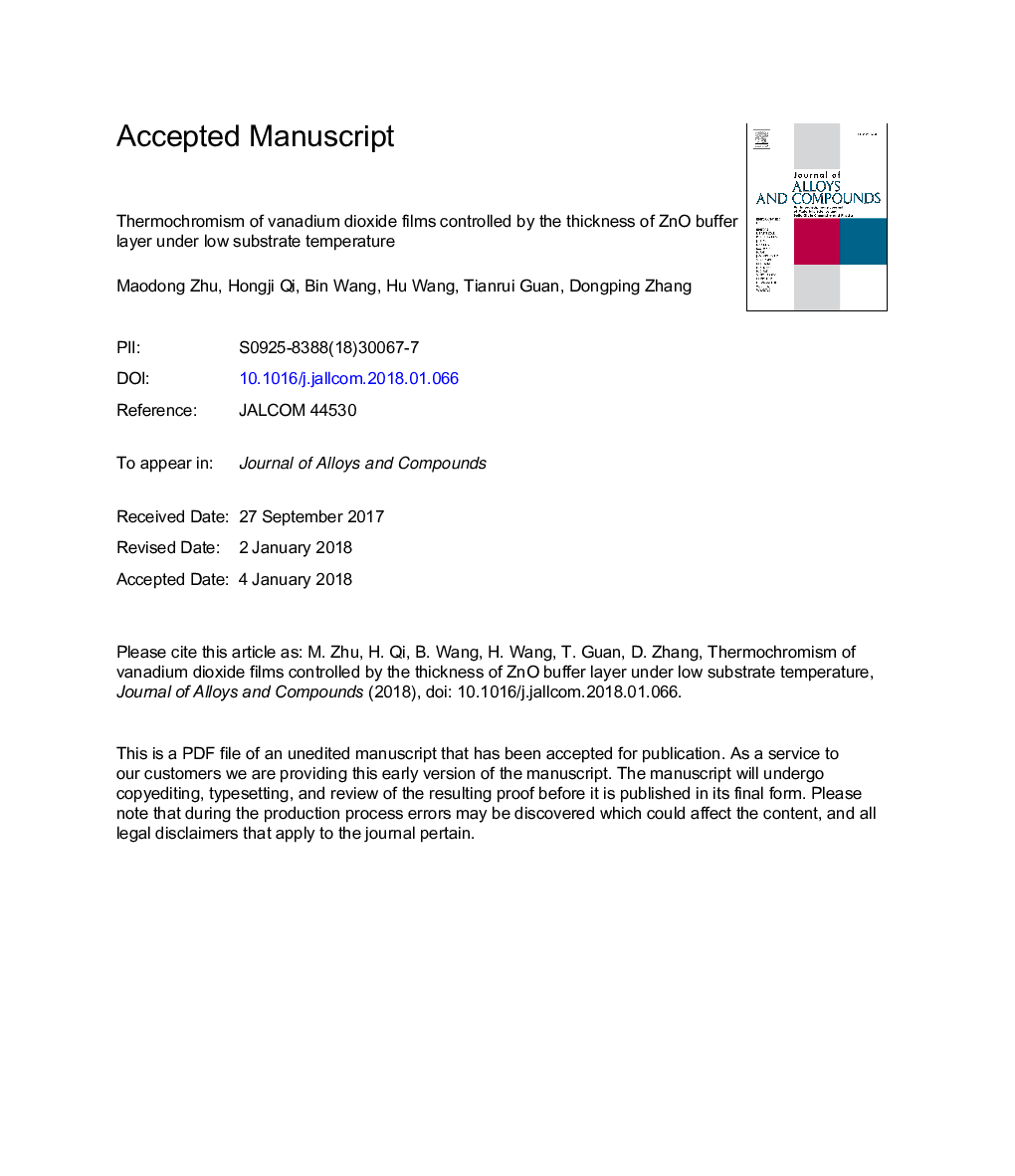| Article ID | Journal | Published Year | Pages | File Type |
|---|---|---|---|---|
| 7993907 | Journal of Alloys and Compounds | 2018 | 16 Pages |
Abstract
High-quality vanadium dioxide (VO2) thermochromic thin films were fabricated on ZnO/soda-lime glass via direct current magnetron sputtering at a low temperature of 320 °C. The ZnO polycrystalline film was used as a buffer layer between glass substrate and VO2 film to improve the thermochromic property of VO2 film. The results of XRD, Raman spectrum, SEM and visible-infrared spectrum indicated that the thickness of the ZnO buffer layer has a significant effect on the physical and thermochromic performances of VO2 films. The surface morphologies of all VO2 films can be divided into three groups by employing ZnO buffers with different thicknesses. The film with thin buffer (56 nm) exhibited a weak crystallinity, low phase temperature and low solar energy modulability compared with the pristine sample. However, the crystallinity and solar switching efficiency of VO2 films noticeably increased as the thickness of the buffer layer increased further (thicker than 56 nm). The calculated modulability of solar energy of the VO2 film with a 235-nm thick ZnO buffer layer is about 13.11%, which may be beneficial in the application of VO2 films for smart energy-efficient windows.
Related Topics
Physical Sciences and Engineering
Materials Science
Metals and Alloys
Authors
Maodong Zhu, Hongji Qi, Bin Wang, Hu Wang, Tianrui Guan, Dongping Zhang,
